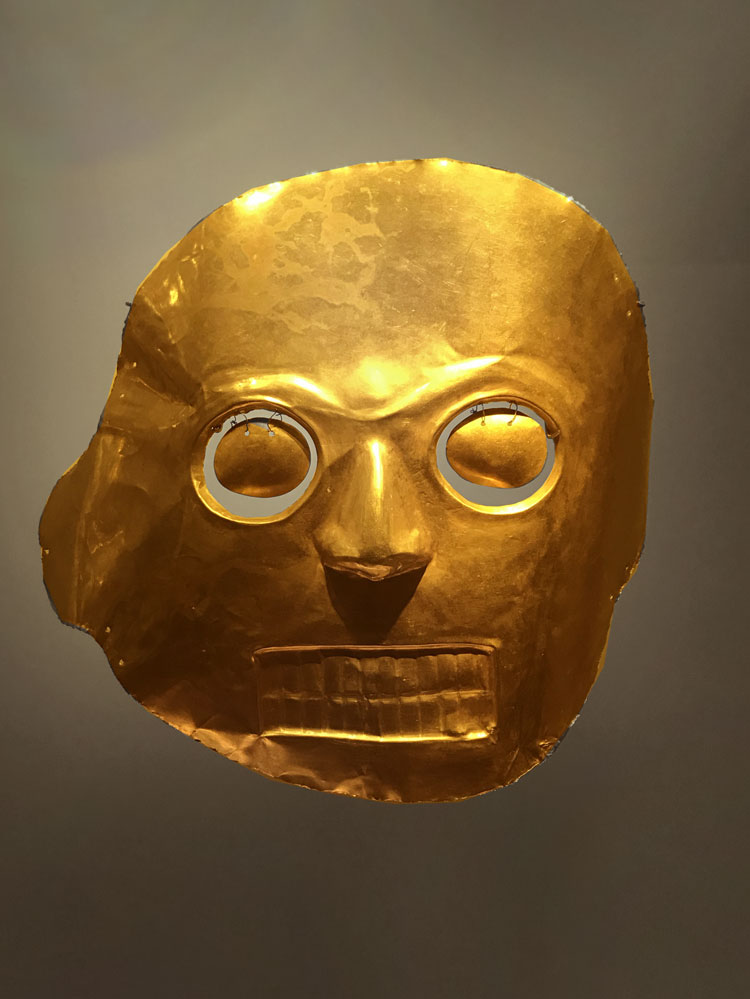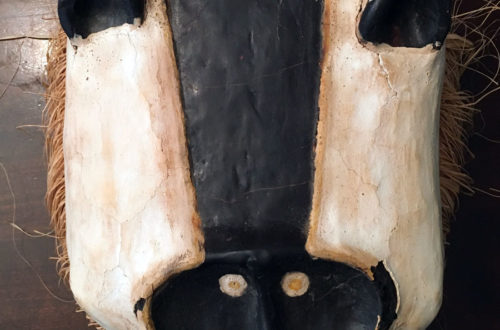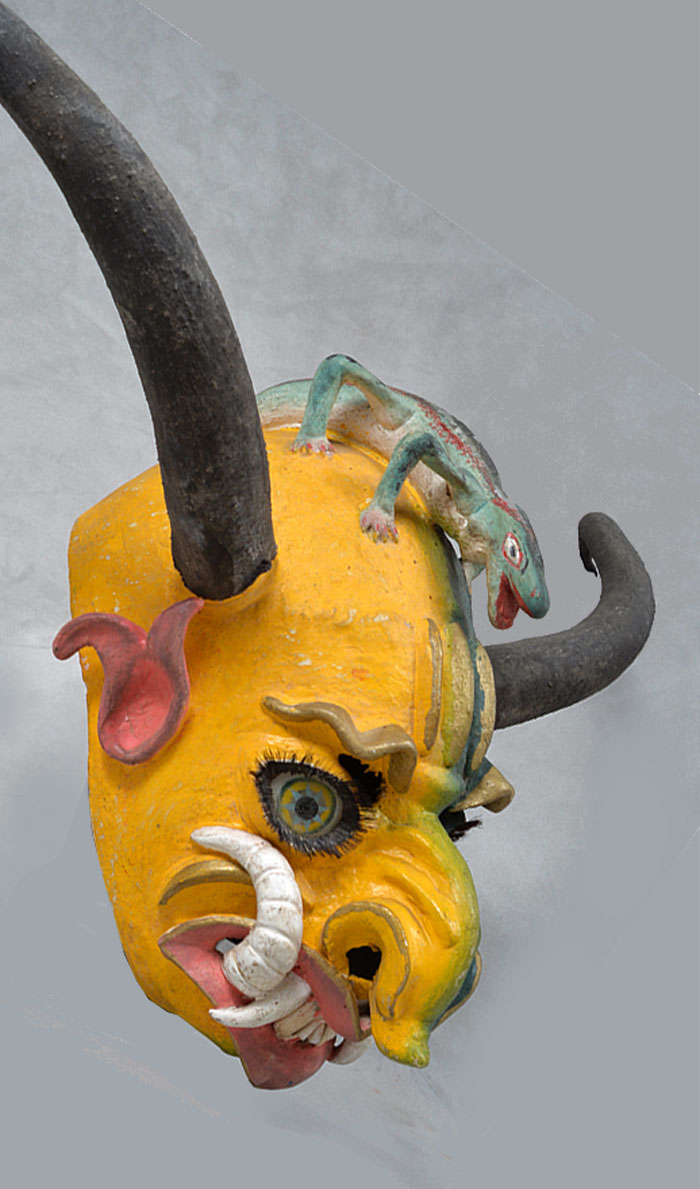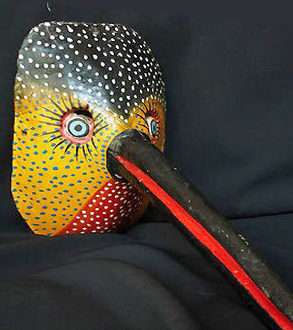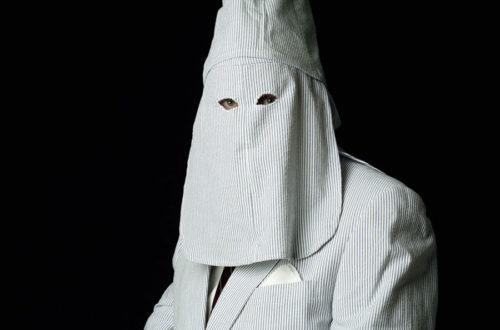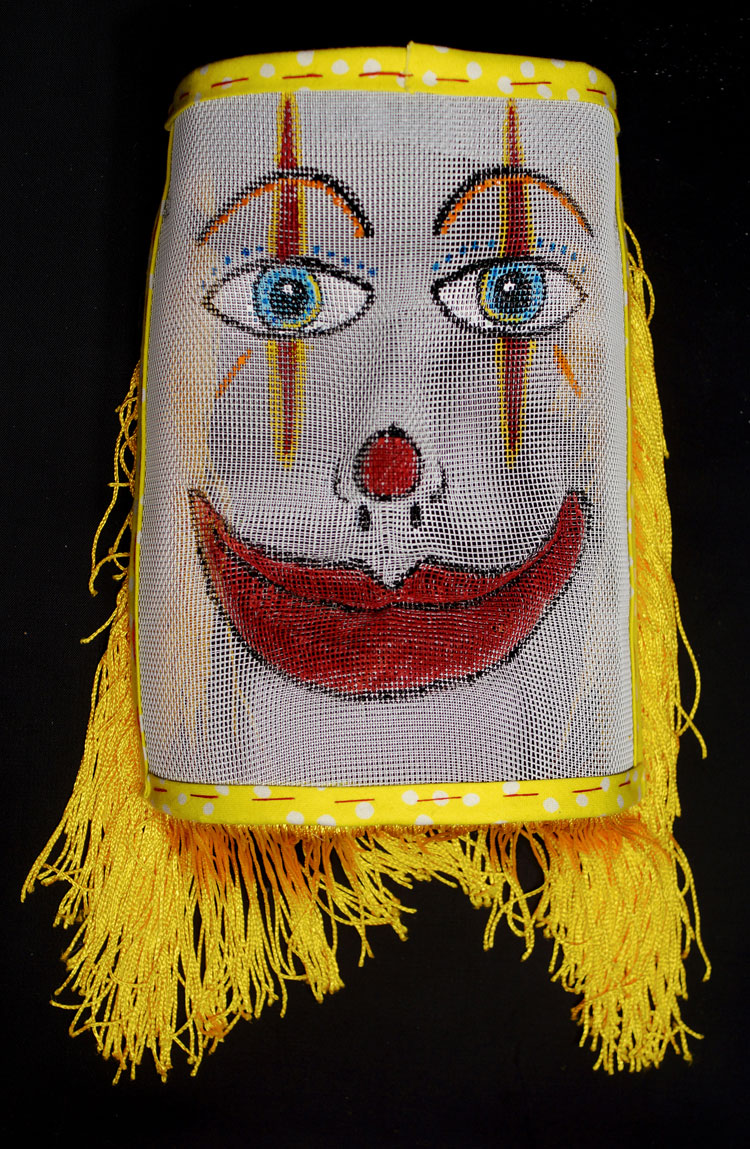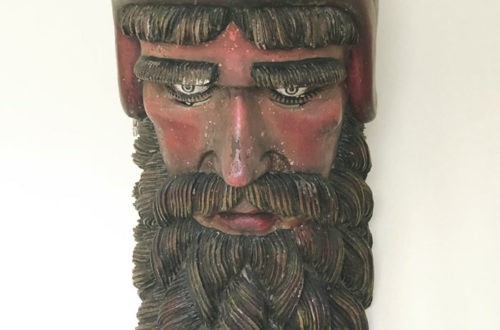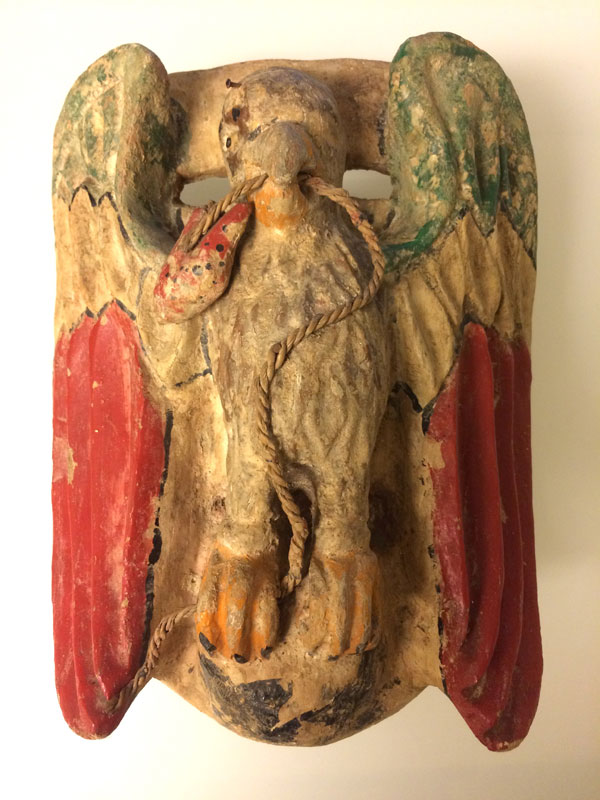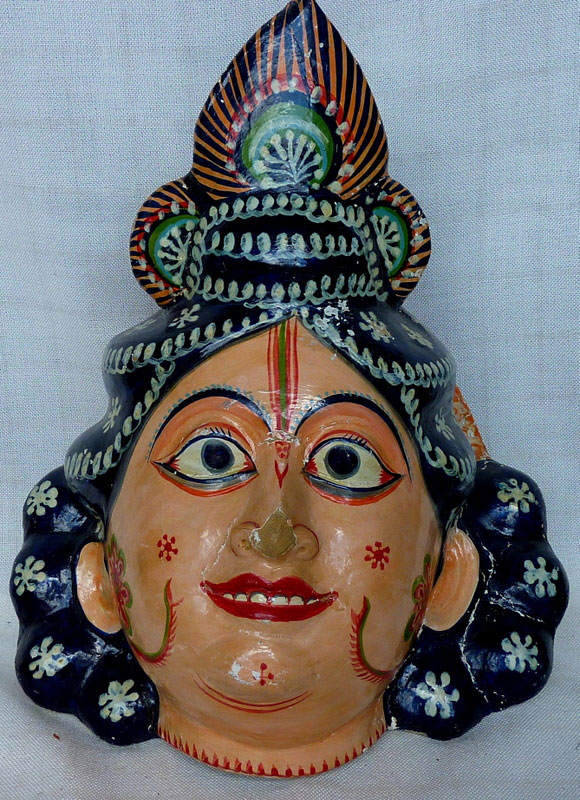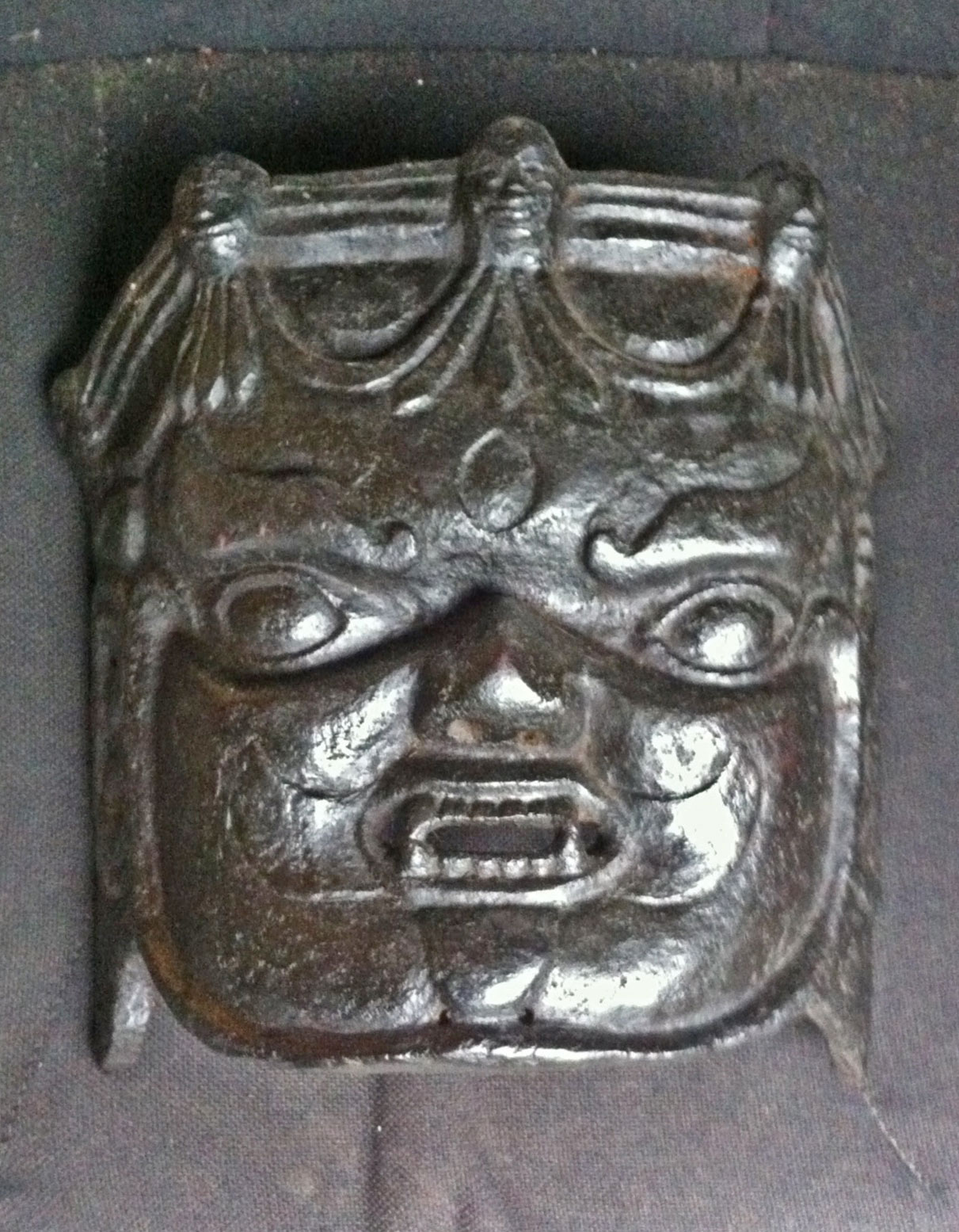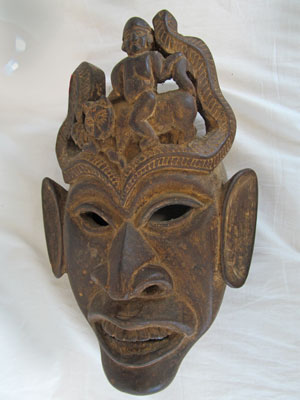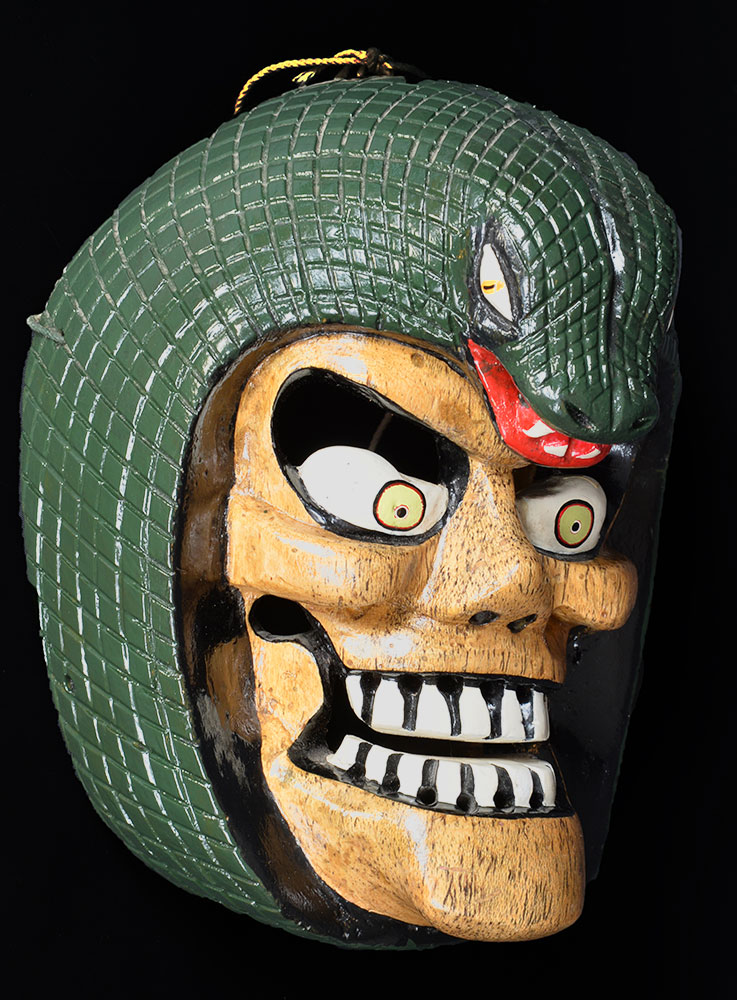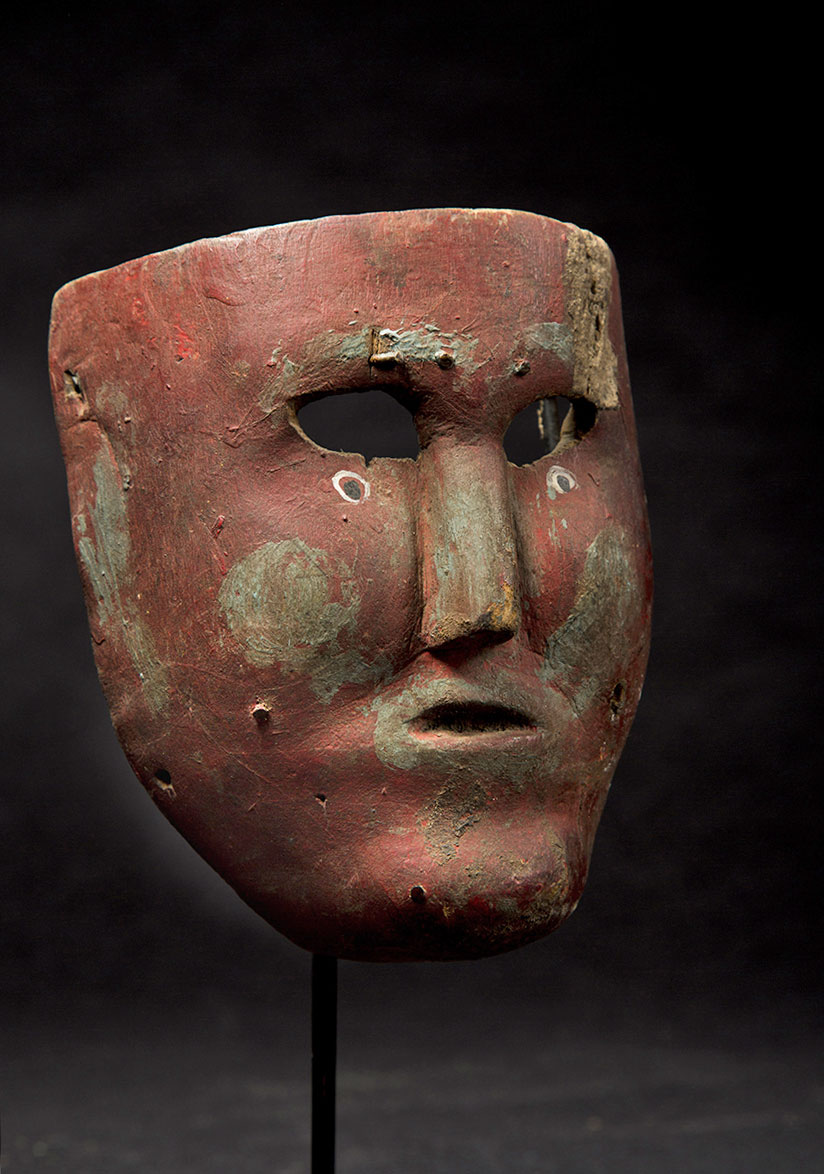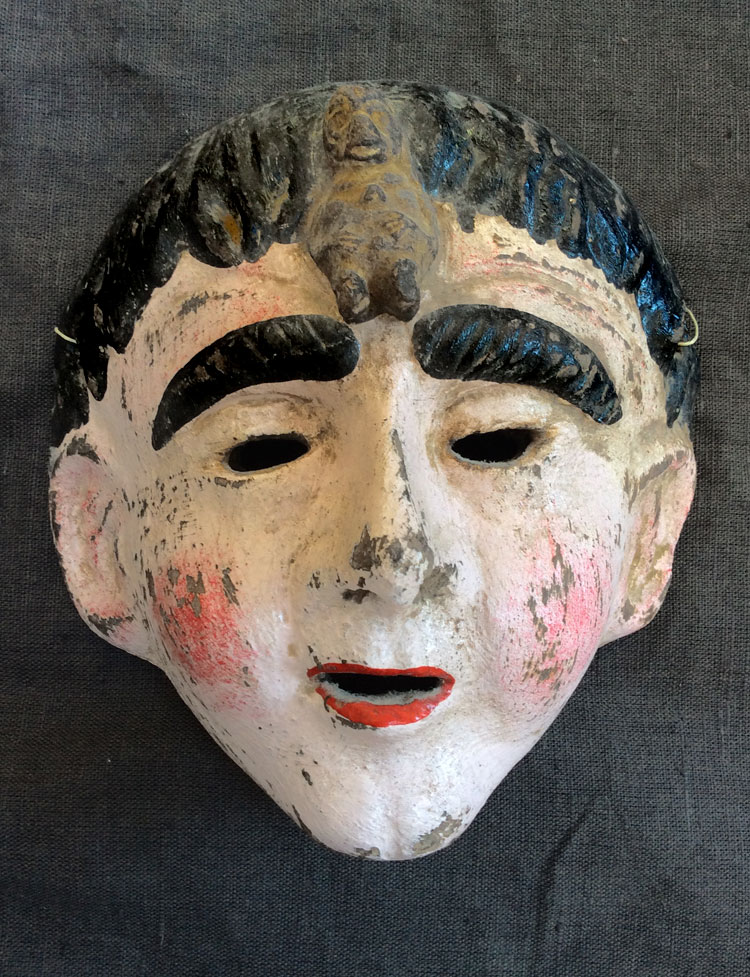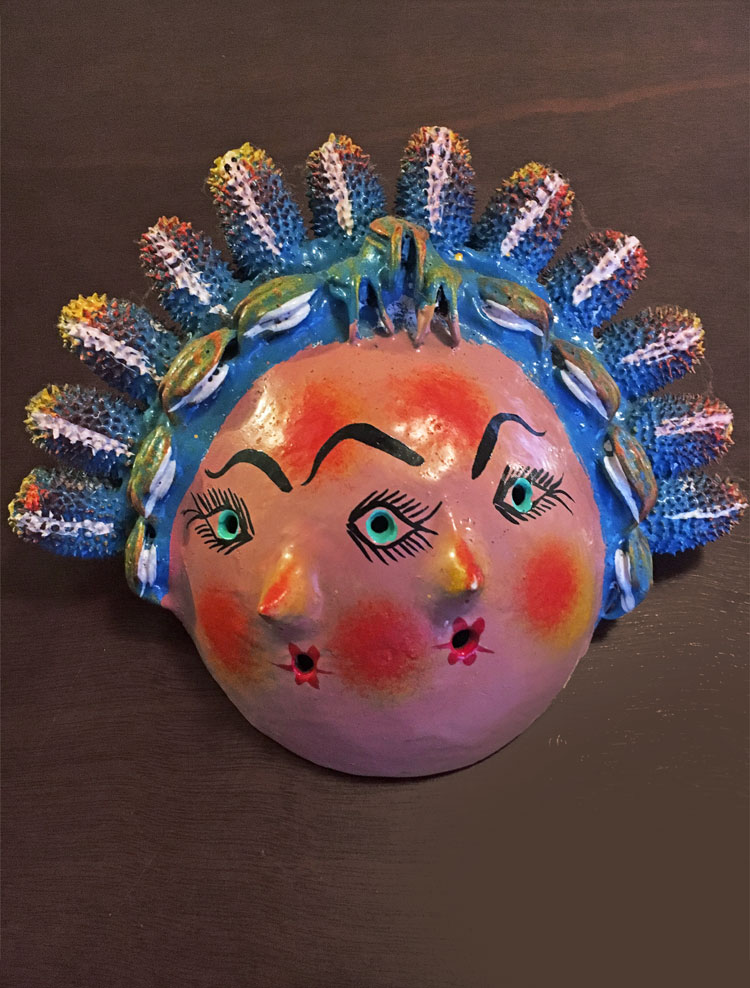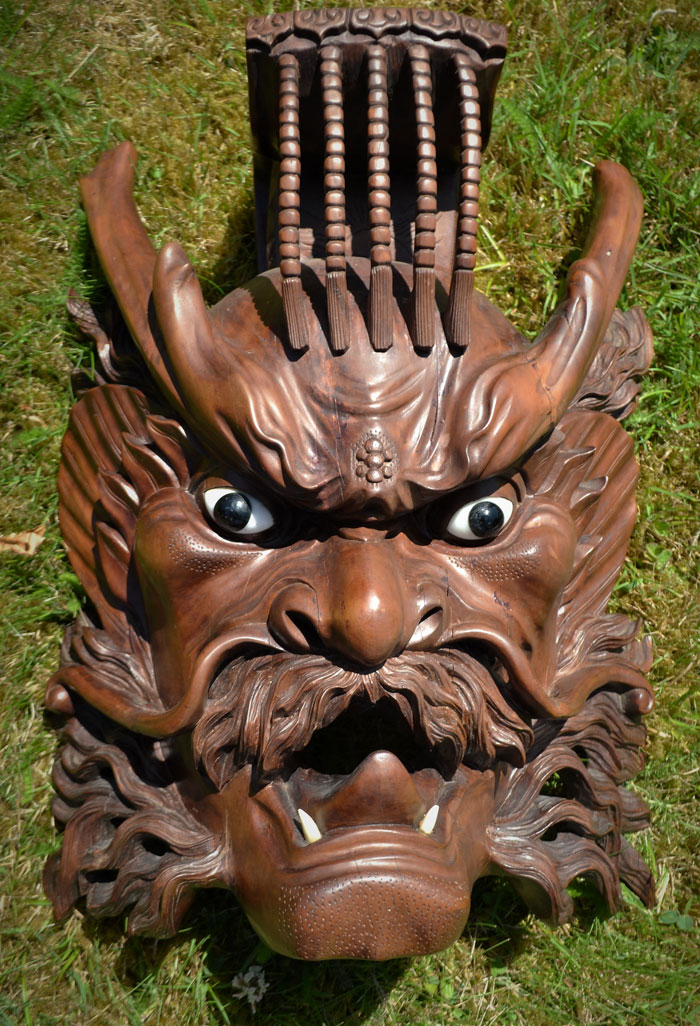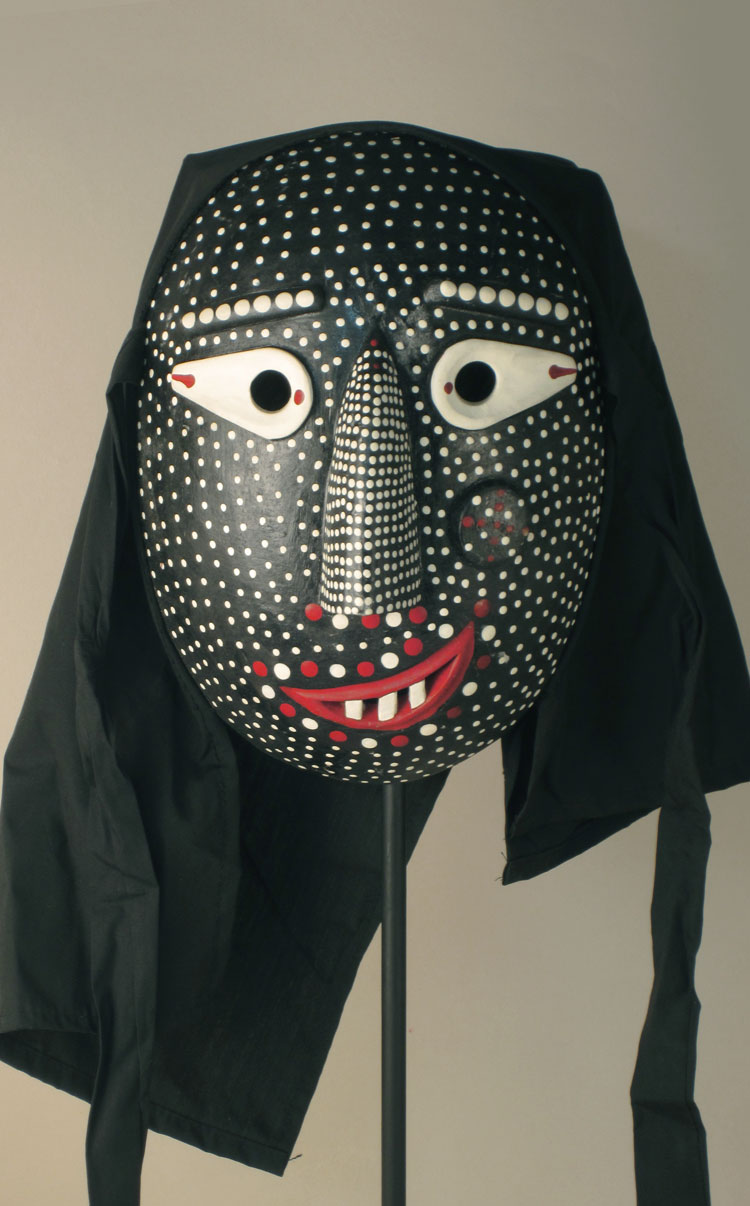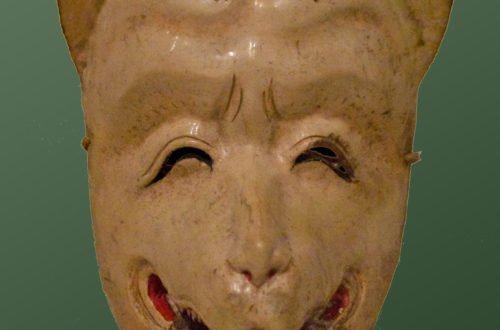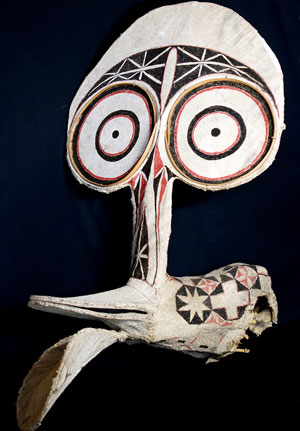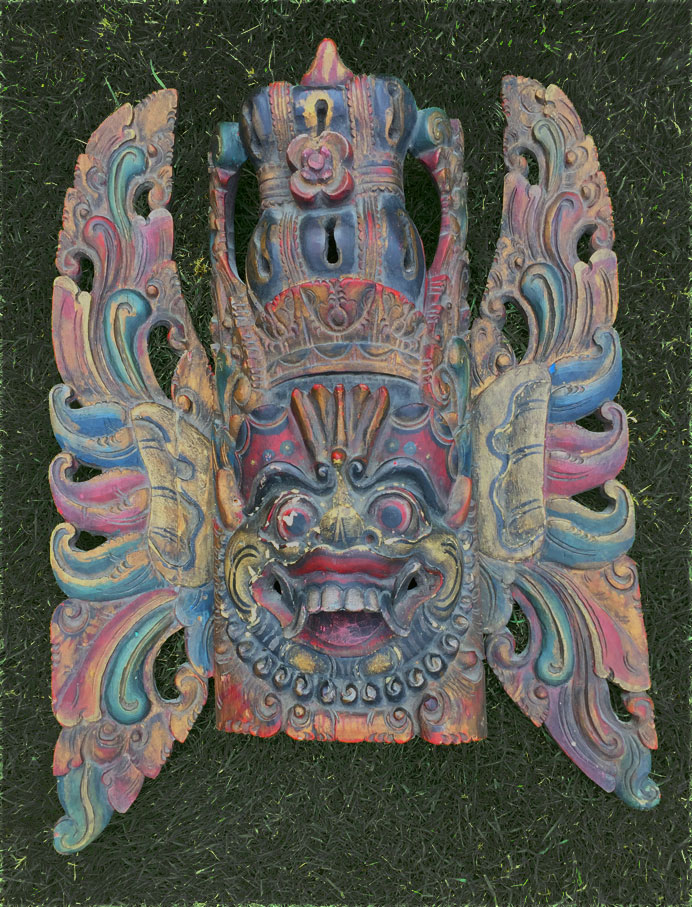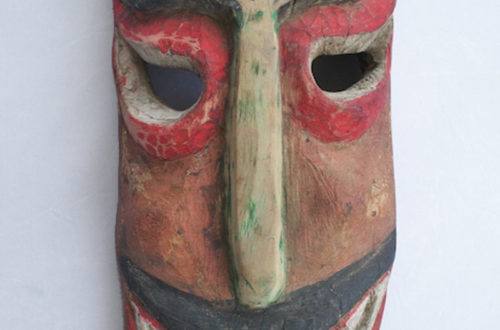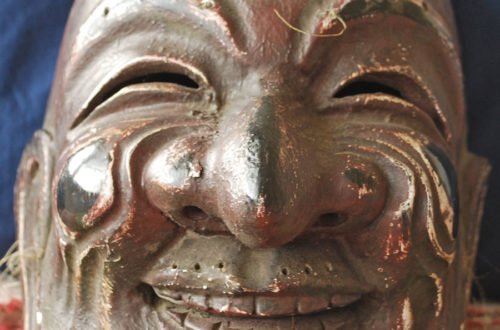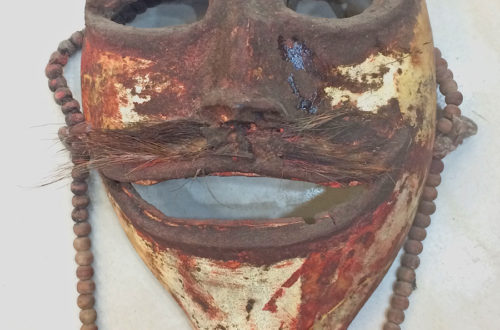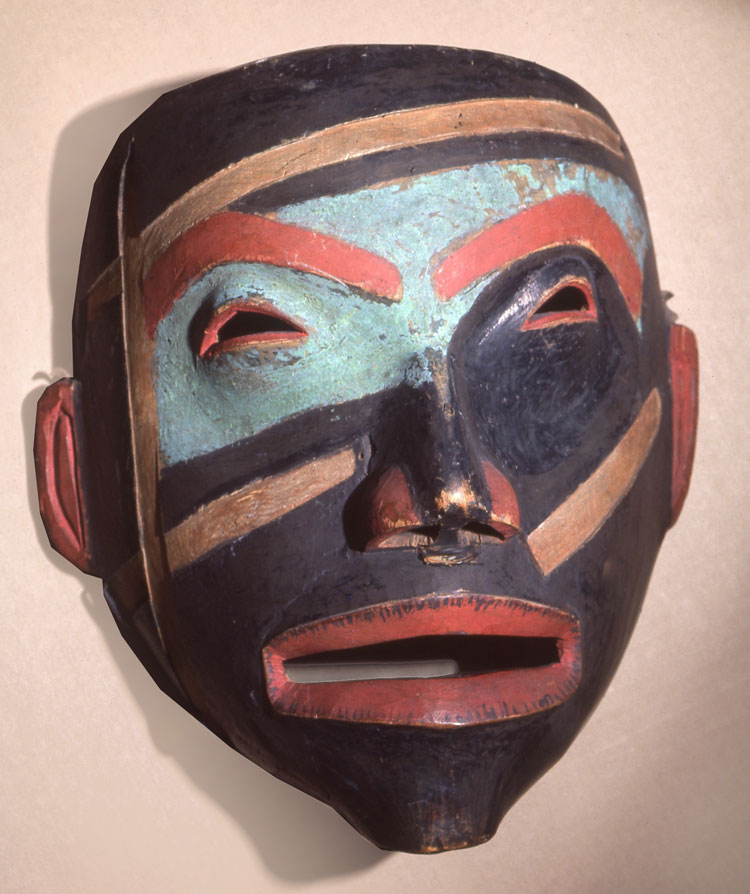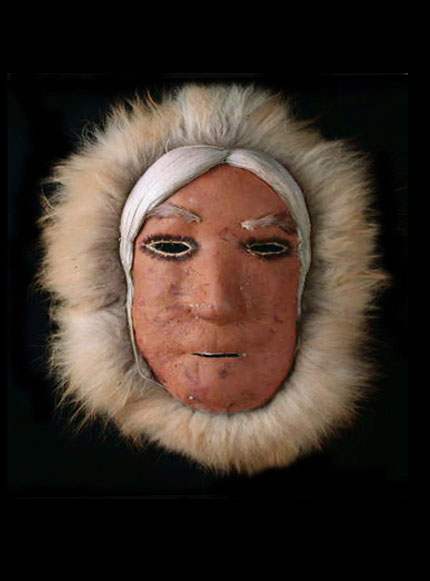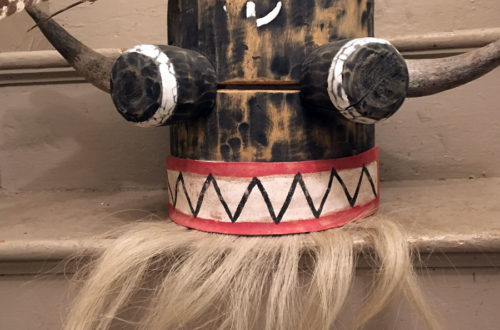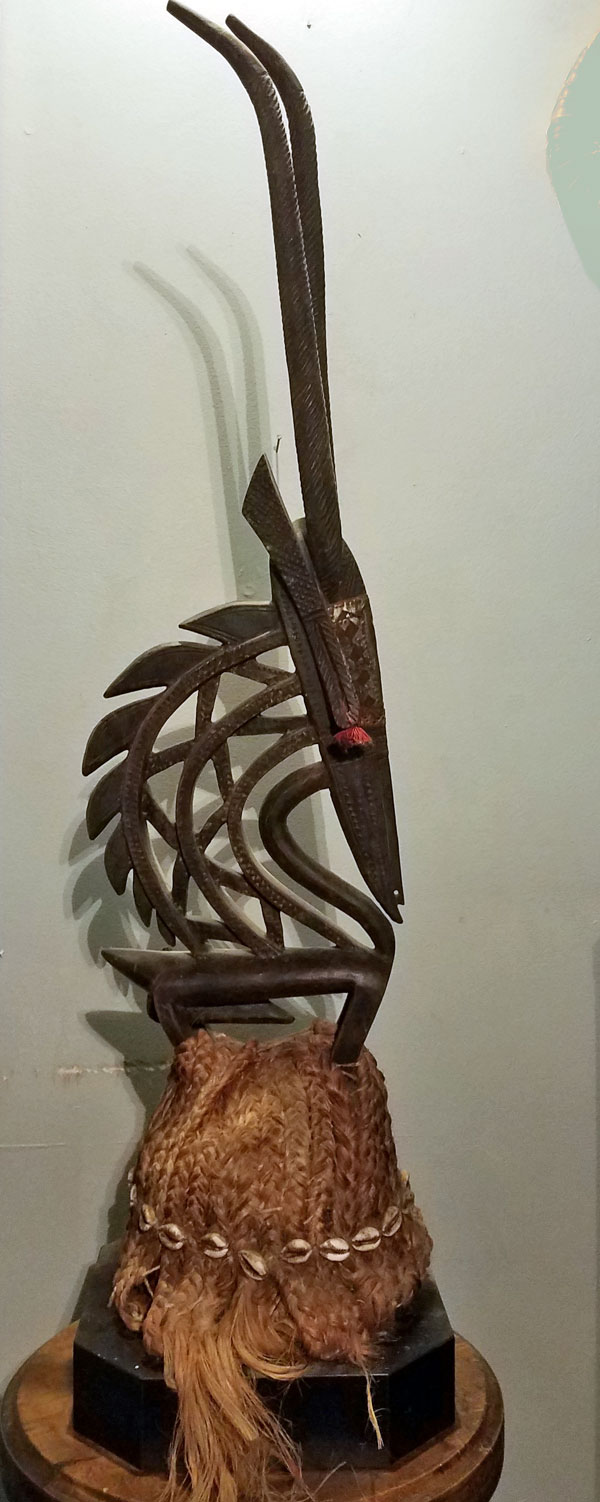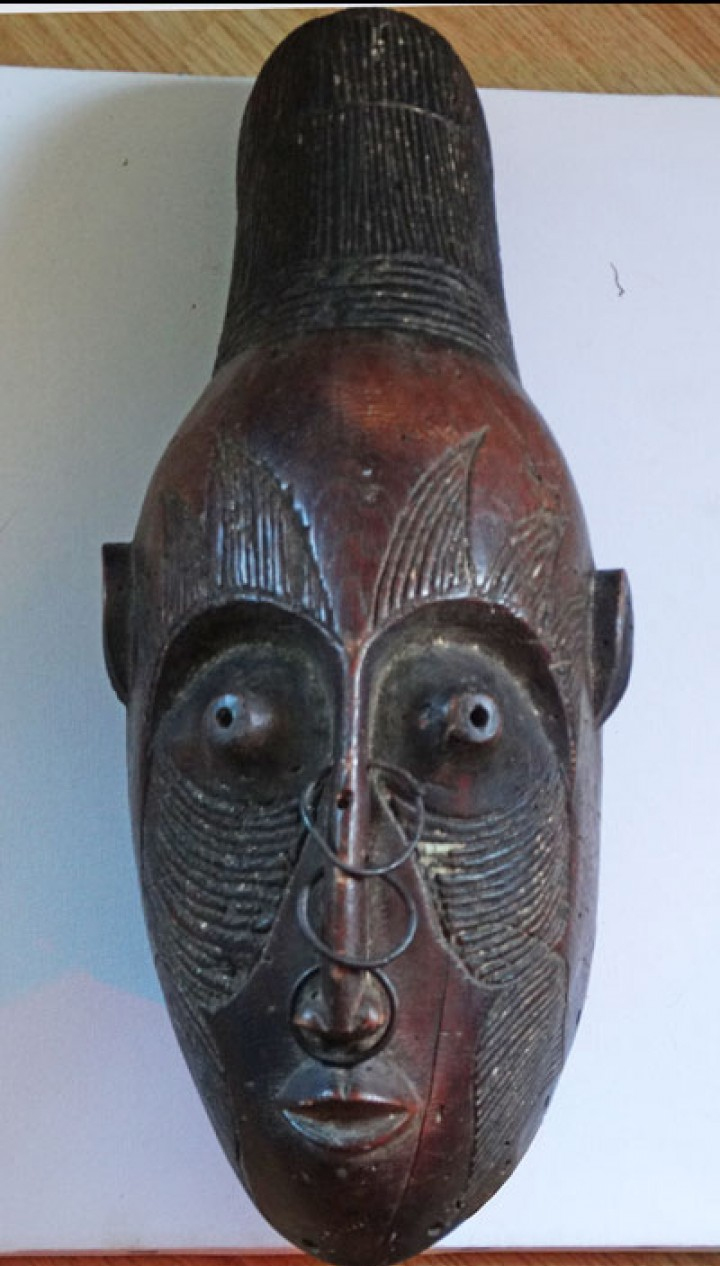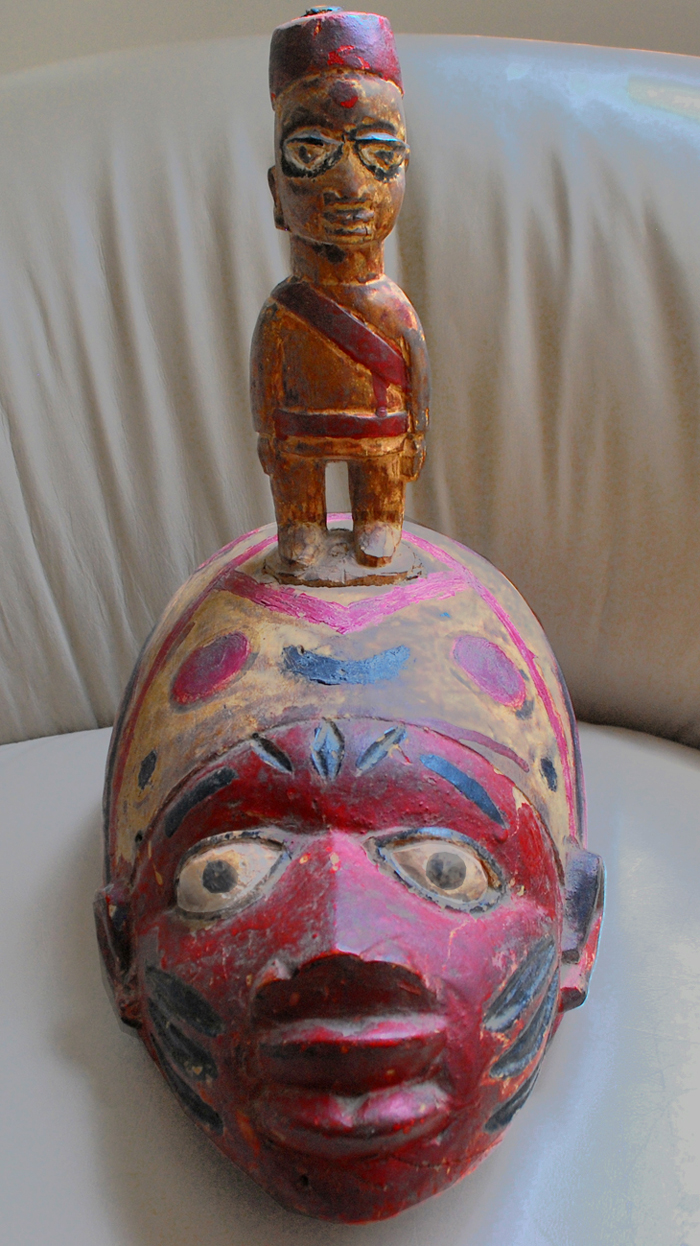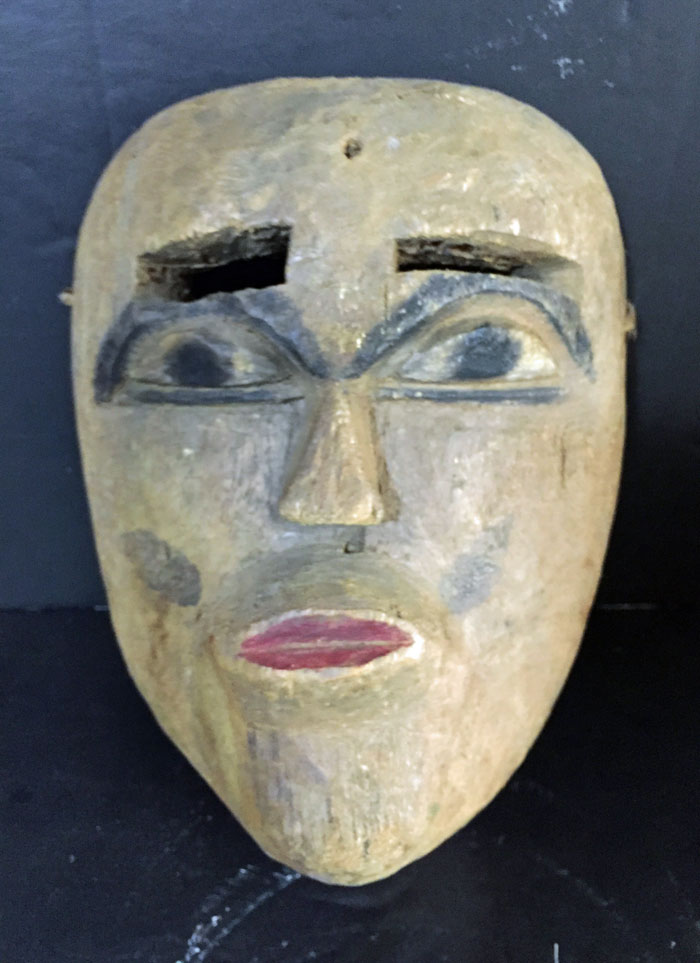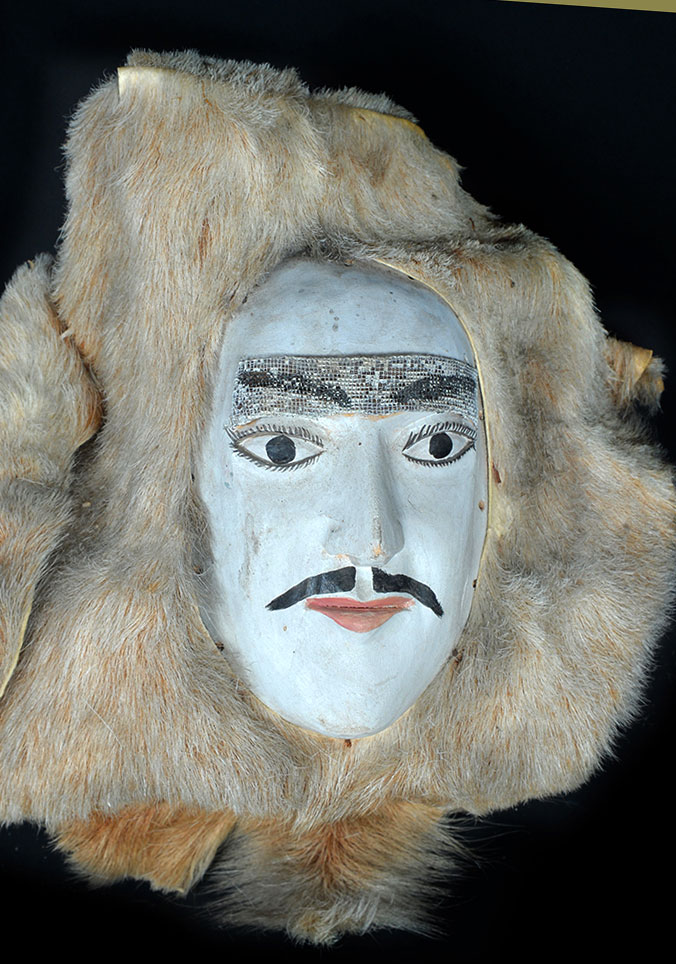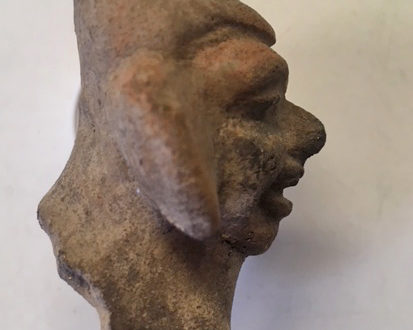Q: Here is a burial masks made of pure gold from the Oro Museo in Bogota, Colombia. Amy, 1191 A: In the spirit of full disclosure, Amy is one of my beautiful daughter-in-laws. I’m sure she enjoyed her visit to the museum. Burial masks could be found outside of Columbia in some other Central and South American countries before 1492. They are not unusual, and were often made of materials other than precious metals. The museum is one of the most visited tourist highlights in the country. It receives around 500,000 tourists per year. It displays a selection of pre-Columbian gold and other metal alloys. Together with pottery, stone, shell,…
-
-
Deformity masks in other cultures
Q: As you know, collectors occasionally run into deformity and disease masks. I’d like to hear more about them. I’d especially be indebted if you started a blog thread on the topic. Nate, 1190 A: This first one is from the Ibibio people of Nigeria. It measures 7 3/4″ high. The small face with high raised forehead above tiny eyes, carved with no nose or upper lip and with teeth showing in the open face depicts either syphilitic yaws or a severe cleft palate. It comes from the Cobbs Auctioneers. The second one is a Mbangu from the Pende of the DRC. 12″ high. It represents a hunter who has…
-
La Puta mask from Naolinco, Veracruz
In case some of you don’t know Spanish, La Puta means whore. These characters often show up in Mexican dances and parades. More from Aaron on his buying trip to Veracruz, Mexico: “Another guy, who wasn’t a mask maker but sold sweets in front of his house, had a truly amazing collection. As we passed by, I admired his collection, and he invited me into his tiny 2-room home. Classic Mexican hospitality. This guy had nothing, probably made $2000/year. I asked him if he was willing to sell any of them, and he said they belonged to his children and grandchildren, so no dice. I could have made him quite…
-
Sri Balaram mask from India
Sharon Lowen, a scholar and performer of Indian traditional dances, sent me this photo of Sri Balaram, a character from one of the Chhau dances in Purulia, and the brother of Krishna. It is an unused performance mask, 13″ x 10 1/2″ x 7″, collected in 1974 from a mask-maker at the Paus Mela Fair in Santineketan, Bengal. Its eyes are not opened yet because dancers do this themselves. Sharon will be in the United States for the first time in 5 years and have two days to disperse (or bring back to India) folk art collected in the 70’s and 80’s. If you have any friends in LA who…
-
Cobra Cavalera made by Lino Mora
Aaron often sends photos of masks he has purchased recently. This one is by a famous mask masker who lives in Veracruz, Mexico. His masks are worn by dancers in the area and are sold in shops and galleries. His masks are always distinctive, with faces that often remind me of the Grim Reaper. Step into the dark side and buy one of his masks for your collection. Lino’s masks are usually quite affordable. Here is what Aaron writes. As you can see, he does a great job of documenting his collection. TITLE: Calavera Cobra TYPE: mask GENERAL REGION: Latin America COUNTRY: Mexico SUBREGION: Veracruz ETHNICITY: Nahua DESCRIPTION: Cobra-Headed Calavera MAKER: Lino Mora Rivera,…
-
Chinese decorative art
Q: I came across this Devil-faced mask at a local auction. It appears to be made from wood, I’m not sure what material the eyes are made of. Have you got any clue where this grinning devil originated from? I recall paying £65 for it, perhaps too much money but I like it. Alex, 1186 A: The quality of this wood carving is very high. The eyes are painted, but sometimes glass is used. It comes from China where skilled carvers have been slowly cranking them out for several generations. They are sold in tourist shops and art galleries around the world. Many different characters are portrayed. They are always…
-
Nice mask from Sri Lanka
Q: I bought this in a sale in the 1970’s and still don’t know where it came from or how old it might be. Since then it has been in my attic. Do you have any ideas? Andrew, 1185 A: This is a large Sri Lankan mask probably representing the demon, Maura Raksha. Do a little research on Google and you to learn more. I my opinion, it is a very decorative piece. It is probably 50-75 years old. Though it was never used, it is a great carving. Try getting the color restored… if it doesn’t cost too much. Enjoy this nice piece of art.
-
Pacific Northwest of US and Canada
Let’s remember that the the first people here in the US and Canada were making great folk art a thousand years ago… and still do. Check out this recently used mask made by the Heiltsuk people of Bella Bella, British Columbia. The tradition of masquerade is alive and well in the NWC area. Masks like this one are used in religious ceremonies, and many more are carefully produced for collectors. We should be thankful that our first inhabitants are willing share their art with all of us. Let me point out that very few NWC masks are asymmetrical, as is this one. In the book Masks of the World, by…
-
Male version of Chi Wara headdress
Q: I was wondering if this headdress was made for tourists or if it was made for ceremonial purposes? I believe it to be 19th century and made by Africans. It was giving to me by my grandfather, and I know he purchased it for less than 100 dollars at an antique store. The owner had no clue how old it was so my grandfather took a chance. Hopefully its not something made for export. Height is 28 without the base, with basket it is 34. Width is 9 inches. Aaron, 1183 A: This beautiful male Chi Wara Headdress from the Bamana people of Mali is used to celebrate…
-
Tlacololero mask from Guerrero, Mexico
Q: I’m having a hard time figuring out where this mask would be from. It’s very simple but the wood seems to have some age to it. Any advice would be great thanks! Dustin, 1182 A: I think this face would have been used in the Dance of the Tlacololeros at least 50 years ago. That thick wood is probably tzompantli, a light weight material favored by Mexican carvers in the old days. Having said that, there is no way I can be sure because Mexican carvers have been making and aging fakes since the late 19th century. Unlike an African mask, the odds favor this piece as being authentic.…
